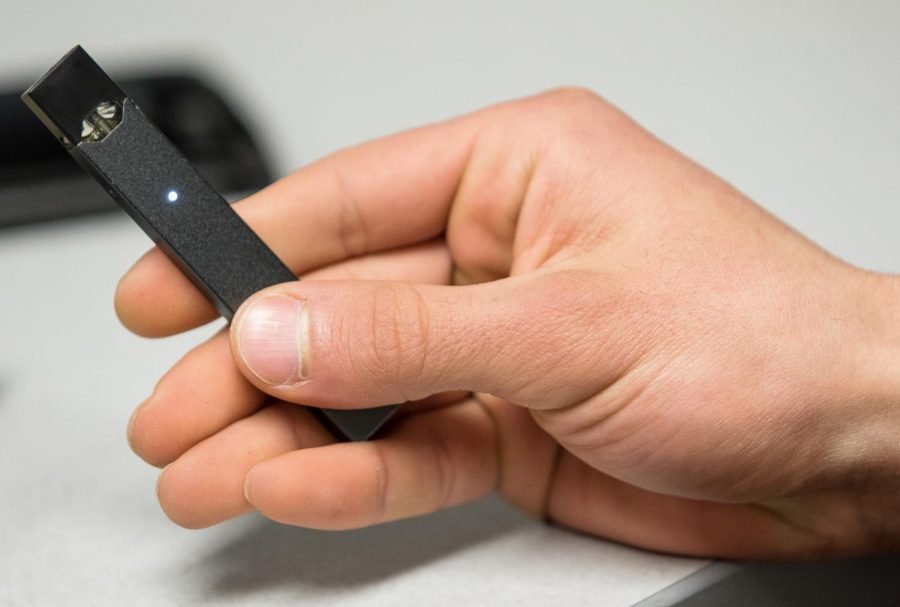Juuls
the harsh reality of juuling
October 16, 2018
Walking around the University of North Dakota, let alone any sort of college campus, you are likely to stumble upon the use of e-cigarettes otherwise known as a Juul or a vape. The market for e-cigarettes has skyrocketed within the last 5 years. As their main business model ‘better for you’ has increased sales. Some users intended use is a way to kick their smoking addiction and others use it for recreation.
The Juul hit the market in 2015 and took off in sales. Juul is an e-cigarette that is sleek in design and resembles a USB, which ultimately draws young adult and adolescent consumers towards the product. Another component that draws a younger audience is the flavors of liquid nicotine like fruit, mango, cucumber and crème brulée.
The other form of e-cigarettes widely known among young adults is a vape pen or a vape module which creates an inhalable vapor. Vaping has become a rather larger trend amongst college students and continues to grow with social media. It has become a trend that is all about popularity.
“Most of the time people vape because they think it is cool,” Kylee Cruys, a freshman at UND said. “I don’t really like vaping, but at the same it’s not my body, it’s the people who are using it that are harming their body.”
Many vapers are unaware of all of the negative side effect correlated with use because of the “better for you” major campaign. When you compare smoking cigarettes side-by-side with the use of an e-cigarette, the health effects are dramatically less condemning. Yet vaping still carries a list of side effects including headaches, respiratory problems and risk for those who have pre-existing health conditions.
Perhaps what is the most concerning side effect is addiction. With the primary market being young adults, it is easier to become addicted. According to a study by Disease Control and Prevention, nicotine hits adolescents harder compared to older individuals.
“We know that nicotine is one of the most addictive substances available in a consumer product,” Adam Leventhal, a clinical psychologist and a professor of preventive medicine at the University of Southern California said. “Withdrawing from nicotine is awful anxiety, depression, irritability, hunger, weight gain. All of those are symptoms of nicotine withdrawal which are unpleasant. So that sums it up.”
With the side effects of nicotine being brushed under the rug, the use of vaping continues on. Here at UND, there is a strict tobacco free policy, although the use of tobacco is permitted on city sidewalks and streets. There is no said policy that includes the use of vape modules and e-cigarettes.
“I hate vaping,” Sophie Weigel, a freshman at UND said. “I am tired of fire alarms going off all the time and vaping on campus is just encouraging our peers to use harmful substances without knowing it.”
Despite the “better for you” campaign, there has been studies shown that there are harmful side effects to vaping. Although nicotine use is associated with these harmful side effects, it has also led to an overall decline of cigarette sales.


